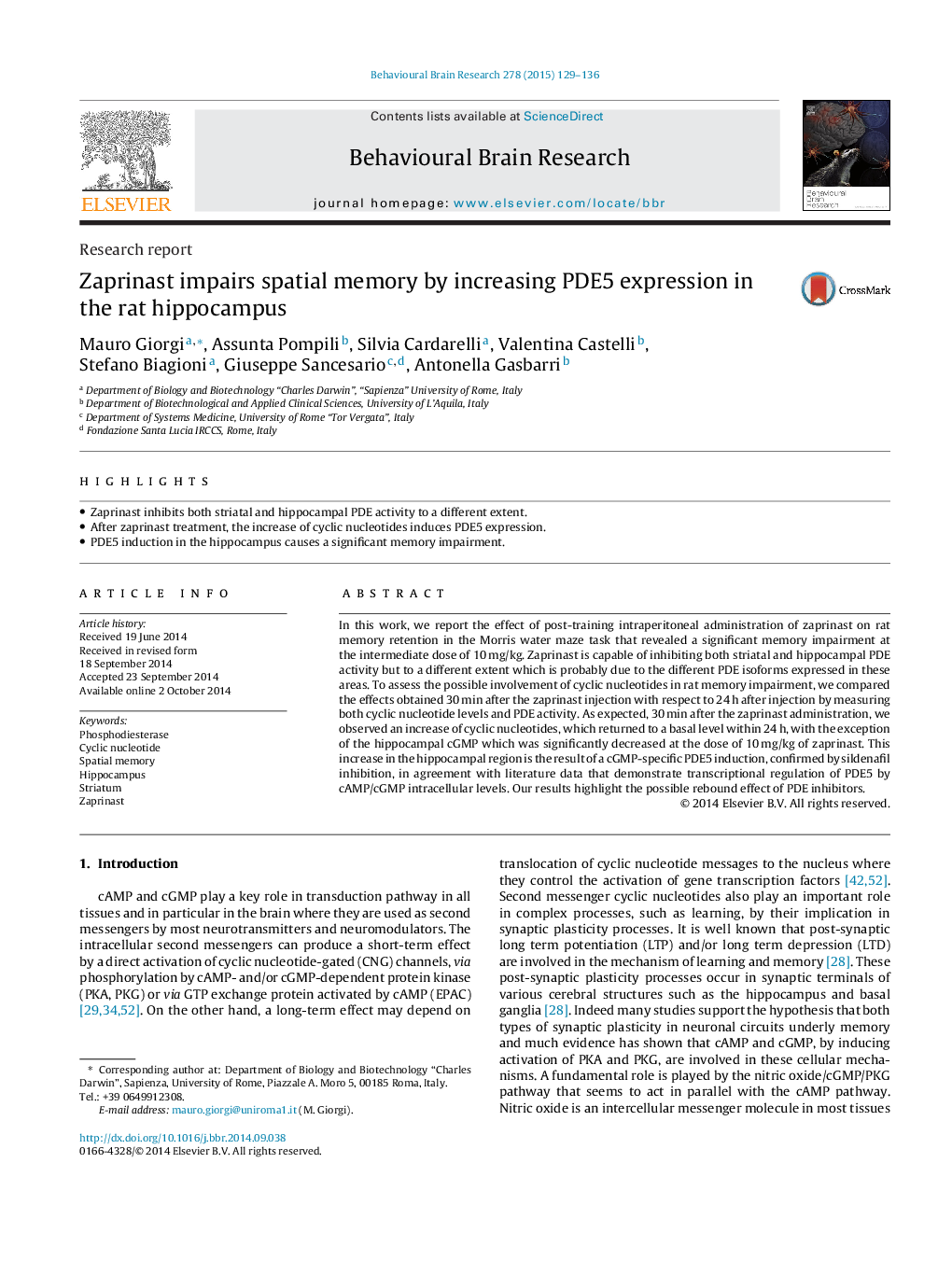| Article ID | Journal | Published Year | Pages | File Type |
|---|---|---|---|---|
| 6257569 | Behavioural Brain Research | 2015 | 8 Pages |
â¢Zaprinast inhibits both striatal and hippocampal PDE activity to a different extent.â¢After zaprinast treatment, the increase of cyclic nucleotides induces PDE5 expression.â¢PDE5 induction in the hippocampus causes a significant memory impairment.
In this work, we report the effect of post-training intraperitoneal administration of zaprinast on rat memory retention in the Morris water maze task that revealed a significant memory impairment at the intermediate dose of 10Â mg/kg. Zaprinast is capable of inhibiting both striatal and hippocampal PDE activity but to a different extent which is probably due to the different PDE isoforms expressed in these areas. To assess the possible involvement of cyclic nucleotides in rat memory impairment, we compared the effects obtained 30Â min after the zaprinast injection with respect to 24Â h after injection by measuring both cyclic nucleotide levels and PDE activity. As expected, 30Â min after the zaprinast administration, we observed an increase of cyclic nucleotides, which returned to a basal level within 24Â h, with the exception of the hippocampal cGMP which was significantly decreased at the dose of 10Â mg/kg of zaprinast. This increase in the hippocampal region is the result of a cGMP-specific PDE5 induction, confirmed by sildenafil inhibition, in agreement with literature data that demonstrate transcriptional regulation of PDE5 by cAMP/cGMP intracellular levels. Our results highlight the possible rebound effect of PDE inhibitors.
